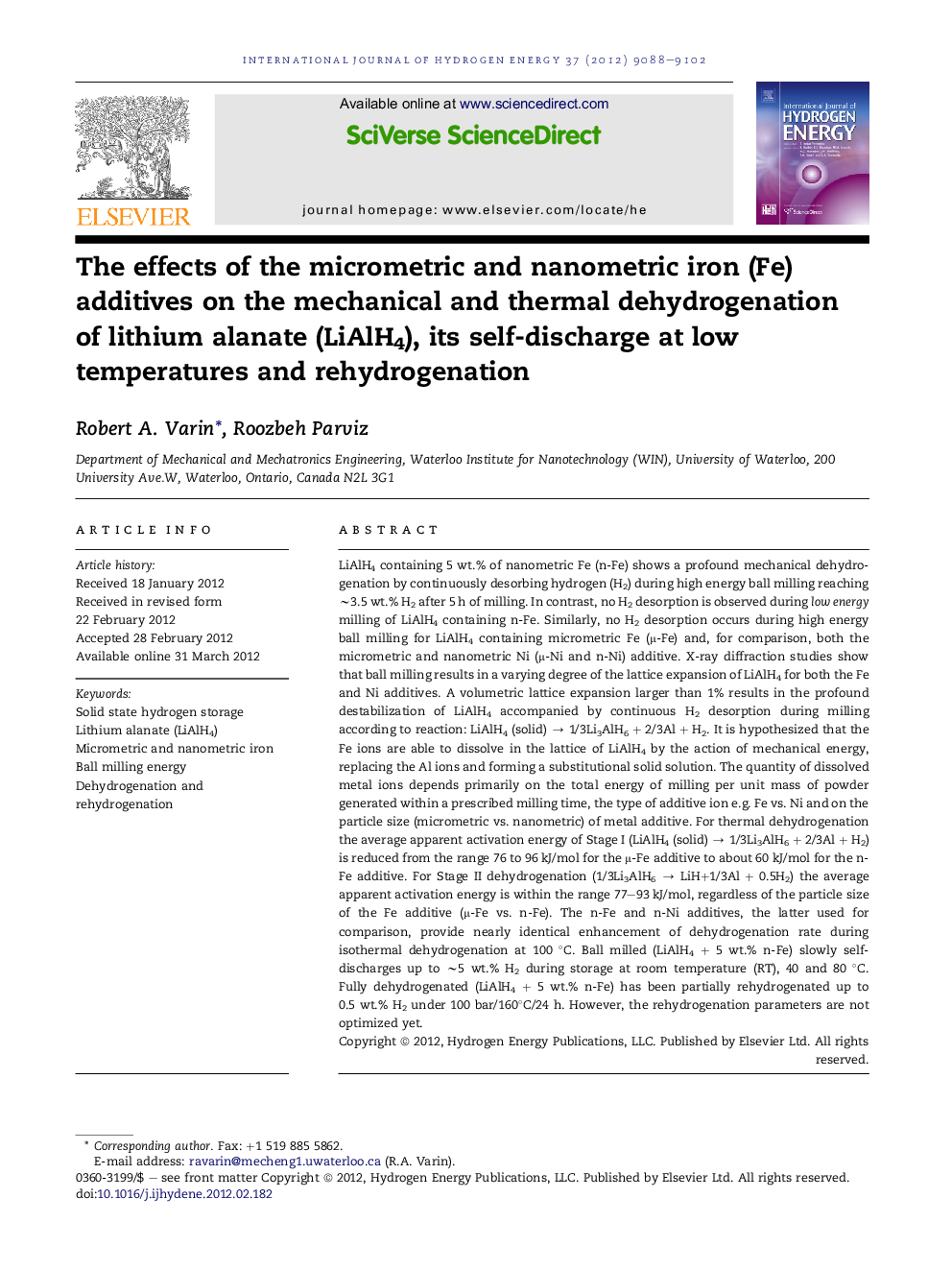| کد مقاله | کد نشریه | سال انتشار | مقاله انگلیسی | نسخه تمام متن |
|---|---|---|---|---|
| 1271407 | 1497558 | 2012 | 15 صفحه PDF | دانلود رایگان |

LiAlH4 containing 5 wt.% of nanometric Fe (n-Fe) shows a profound mechanical dehydrogenation by continuously desorbing hydrogen (H2) during high energy ball milling reaching ∼3.5 wt.% H2 after 5 h of milling. In contrast, no H2 desorption is observed during low energy milling of LiAlH4 containing n-Fe. Similarly, no H2 desorption occurs during high energy ball milling for LiAlH4 containing micrometric Fe (μ-Fe) and, for comparison, both the micrometric and nanometric Ni (μ-Ni and n-Ni) additive. X-ray diffraction studies show that ball milling results in a varying degree of the lattice expansion of LiAlH4 for both the Fe and Ni additives. A volumetric lattice expansion larger than 1% results in the profound destabilization of LiAlH4 accompanied by continuous H2 desorption during milling according to reaction: LiAlH4 (solid) → 1/3Li3AlH6 + 2/3Al + H2. It is hypothesized that the Fe ions are able to dissolve in the lattice of LiAlH4 by the action of mechanical energy, replacing the Al ions and forming a substitutional solid solution. The quantity of dissolved metal ions depends primarily on the total energy of milling per unit mass of powder generated within a prescribed milling time, the type of additive ion e.g. Fe vs. Ni and on the particle size (micrometric vs. nanometric) of metal additive. For thermal dehydrogenation the average apparent activation energy of Stage I (LiAlH4 (solid) → 1/3Li3AlH6 + 2/3Al + H2) is reduced from the range 76 to 96 kJ/mol for the μ-Fe additive to about 60 kJ/mol for the n-Fe additive. For Stage II dehydrogenation (1/3Li3AlH6 → LiH+1/3Al + 0.5H2) the average apparent activation energy is within the range 77–93 kJ/mol, regardless of the particle size of the Fe additive (μ-Fe vs. n-Fe). The n-Fe and n-Ni additives, the latter used for comparison, provide nearly identical enhancement of dehydrogenation rate during isothermal dehydrogenation at 100 °C. Ball milled (LiAlH4 + 5 wt.% n-Fe) slowly self-discharges up to ∼5 wt.% H2 during storage at room temperature (RT), 40 and 80 °C. Fully dehydrogenated (LiAlH4 + 5 wt.% n-Fe) has been partially rehydrogenated up to 0.5 wt.% H2 under 100 bar/160°C/24 h. However, the rehydrogenation parameters are not optimized yet.
► During high energy ball milling LiAlH4 containing 5 wt.% of nanometric Fe (n-Fe) continuously desorbs hydrogen.
► A volumetric lattice expansion larger than 1% destabilizes LiAlH4.
► Additive metal ions can dissolve in the LiAlH4 crystal lattice causing its expansion.
► Slow self-discharge up to 5 wt.% H2 during storage is observed.
► A partial rehydrogenation was successful but needs optimization.
Journal: International Journal of Hydrogen Energy - Volume 37, Issue 11, June 2012, Pages 9088–9102